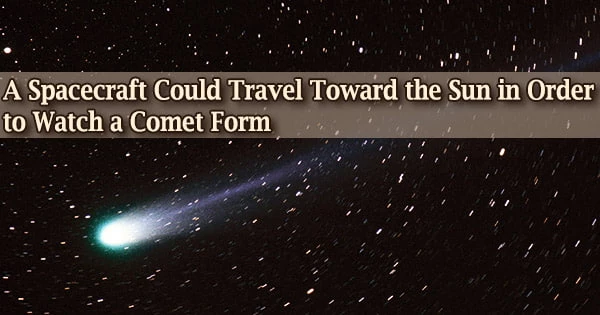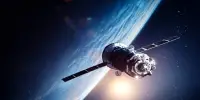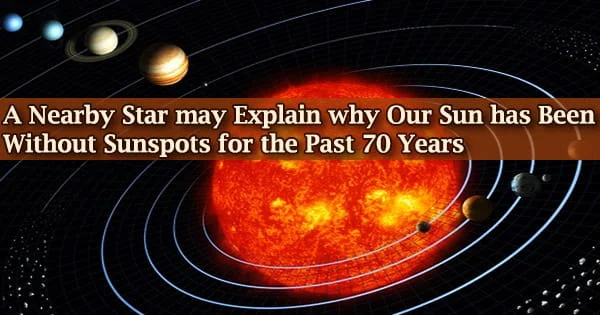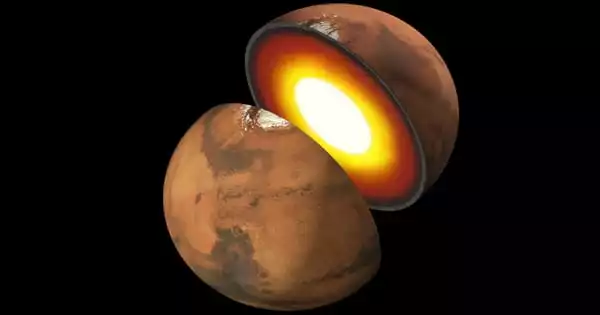There are countless little pieces of ice and rock hidden deep within the solar system, between Jupiter and Neptune. One of them will occasionally slam into Jupiter’s orbit, get captured, and be thrown into the inner solar system toward the sun and us.
Many of the comets that eventually pass Earth are assumed to have originated from here. The dynamics of this poorly known system are described in a new study.
One of the conclusions is that a spacecraft may travel to Jupiter, wait in Jupiter’s orbit until one of these objects is drawn into the planet’s gravity well, and then join the object to see its transformation into a comet in real time.
Comets are frozen remnants of the solar system’s origin made of ice, rock, and dust. They can be several miles to tens of miles across, but when they approach the Sun, they heat up and eject gases and dust into a luminous head that can be as big as a planet. Millions of kilometers of this substance’s tail are formed.
Comets often have high orbital inclinations and are located distant from other celestial bodies. They are so far away, but on sometimes they can be seen in the night sky. Asteroids and comets vary primarily in that the latter have an extended, gravitationally free environment surrounding their center nucleus.
“This would be an amazing opportunity to see a pristine comet ‘turn on’ for the first time,” said Darryl Seligman, a postdoctoral researcher with the University of Chicago and corresponding author of the paper, which is accepted to The Planetary Science Journal. “It would yield a treasure trove of information about how comets move and why, how the solar system formed, and even how Earth-like planets form.”
Over the past 50 years, researchers have revised their views on how our solar system formed, in part because to the discovery of numerous significant asteroid belts. They now picture a system that is considerably more dynamic and unstable, with ice and rock fragments strewn across the solar system, smashing into one another, reforming, and moving around, as opposed to large planets silently growing in place.
While some of these particles eventually combined to form the eight major planets, others are still loose and dispersed over different parts of space.
“These minor bodies show you the solar system is actually this very dynamic and almost living place that’s constantly in a state of flux,” said Seligman.
According to the length of their orbital periods, which can range from a few years to several million years, comets are categorized. Comets are solar system-orbiting snowballs made of frozen gases, rock, and dust.
Both the smaller Kuiper belt and the broader asteroid belt past Neptune are widely known to scientists. Both are located close to Mars. However, there is a different, less well-known population of objects called the centaurs that lurks between Jupiter and Neptune (named after the mythical hybrid creatures due to their classification halfway between asteroids and comets).
This would be an amazing opportunity to see a pristine comet ‘turn on’ for the first time. It would yield a treasure trove of information about how comets move and why, how the solar system formed, and even how Earth-like planets form.
Darryl Seligman
These centaurs occasionally become comets after being drawn into the inner solar system.
“These objects are very old, containing ice from the early days of the solar system that has never been melted,” said Seligman. “When an object gets closer to the sun, the ice sublimates and produces these beautiful long tails. Therefore comets are interesting not only because they’re beautiful; they give you a way to probe the chemical composition of things from the distant solar system.”
Researchers looked at the population of centaurs and the processes by which they occasionally transform into comets that are headed for the sun. They calculate that interactions with the orbits of Jupiter and Saturn cause around half of the centaurs-turned-comets to be propelled into the inner solar system. The other half approach Jupiter too closely before being entangled in its orbit and being propelled toward the solar system’s center.
The latter process proposed an ideal approach for space agencies to send a spacecraft to Jupiter and have it remain in orbit there until a centaur knocks into Jupiter’s orbit in order to gain a better look at these soon-to-be comets.
Then, as the centaur moves toward the sun, the spacecraft might join it and take measurements as it changes into a comet. This is a lovely yet harmful process: The stunning tail of a comet is created as the comet’s ice burns off as the temperature rises.
Different types of chemicals and gases make up the ice in comets, and they all begin to burn up at various stages as they approach the sun. A satellite could determine the composition of the comet by measuring that tail.
“You could figure out where typical comet ices turn on, and also what the detailed internal structure of what a comet is, which you have very little hope of figuring out from ground-based telescopes,” Seligman said.
Meanwhile, the surface of the comet erupts as it heats up, creating pockmarks and craters.
“Charting all of this would help you understand the dynamics of the solar system, which is important for things like understanding how to form Earth-like planets in solar systems,” he said.
The scientists noted that even if the plan appears complex, NASA and other space agencies already possess the necessary technologies. Spacecraft frequently travel to the outer solar system; it only took the NASA Juno mission roughly five years to arrive there and start taking amazing pictures of Jupiter.
Other recent missions demonstrate that it is feasible to visit moving objects: A scattering of rocks from one asteroid were carried back by Japan’s Hayabusa 2 mission, and OSIRIS-REx visited an asteroid 200 million miles away.
There is even a potential victim: A centaur named LD2 was likely dragged into Jupiter’s orbit around the year 2063, according to research published a year and a half ago. And as telescopes become more powerful, scientists may soon discover many more of these objects, Seligman said:
“It’s very possible there would be 10 additional targets in the next 40 years, any of which would be attainable by a spacecraft parked at Jupiter.”
Moreover, Seligman said, “We have records of comets dating back thousands of years; how cool would it be to see how that happens up close?”
Robert Jedicke of the University of Hawai’i, Garrett Levine of Yale University, and Kaitlin Kratter of the Steward Observatory at the University of Arizona all contributed to the research.
















